38 standard labels for chemical containers
GHS Label Requirements, Guidelines, and Best Practices These standard graphics are designed to be interpreted by anyone, regardless of their native language. There are 16 GHS pictograms, covering common potential hazards including ignition, combustion, poison, and corrosion. All hazard symbols are surrounded by a red diamond border to help them stand out. You can see the pictograms and their uses here. Chemical Container Labeling - Northwest Safety Here are some of the key requirements to be aware of: All labels must have pictograms, a signal word, hazard and precautionary statements, the product identifier, and supplier identification. Workplace labels must be provided in English. Other languages should be added to the label if applicable or necessary.
Download secondary chemical container labels | EHS If your laboratory uses secondary containers filled with chemicals, the secondary containers must comply with OSHA's Hazard Communication Standard for Labels and Pictograms. For your convenience, EH&S designed secondary chemical labels that can be downloaded from our website and printed onto Avery 5163 labels. You may choose from three designs:

Standard labels for chemical containers
Chemical Hazardous Waste Containers: EPA and DOT Labeling Requirements A container used for chemical hazmat onsite storage must be marked with the words "Hazardous Waste." It must also exhibit the starting date for its accumulation along with information about its contents (e.g., toxic, reactive, ignitable, or corrosive). If you're reusing a container, make sure to remove the old labels. A Guide to OSHA's New GHS Chemical Labeling Requirements The GHS-inspired standards will require chemical manufacturers and importers to label chemical containers with 1) a harmonized signal word 2) GHS pictogram (s) 3) a hazard statement for each hazard class and category and 4) a precautionary statement. These elements are discussed in greater detail below: BRIEF - Occupational Safety and Health Administration Hazard Communication Standard: Labels and Pictograms standard also requires the use of a 16-section safety data sheet format, which provides detailed information regarding the chemical. There is a separate OSHA Brief on SDSs that provides information on the new SDS requirements. All hazardous chemicals shipped after June 1,
Standard labels for chemical containers. PDF HEALTH & SAFETY Chemical Container Labeling Hazardous chemical containers used within a Laboratory Area must follow the OSHA Laboratory Standard. Hazardous chemical containers used within a Non-Laboratory Area must follow the OSHA Hazardous Communication ... o Label the outside of the container with approximate contents if feasible or list where more information can be Chemical Container Labels | EHS Dev - University of Washington The label on an original chemical container must be legible and written in English. It must include the chemical/product name as shown on the SDS and the manufacturer's name and address. Do not accept materials if the label is illegible or missing required information. (See example of original label below). Container Labels Reading and work safely-Safety Poster - HSSE WORLD GHS Labels for Primary Containers Primary chemical containers are the bags, barrels, bottles, boxes, cans, cylinders, and drums that you receive from the manufacturer. These containers should be labeled following the GHS mandates per the GHS label example above and include all six labeling elements. Chemical Container Labeling - Laboratory Safety Use these methods to label your secondary chemical containers: Method 1: Containers ≥ 50 mL. Method 2: Test Tubes, Vials, etc. STEP 1: Write out the entire name of the chemical. AND. STEP 2: Indicate the GHS Hazard Class (es). Use self-stick GHS Pictogram (s) to identify the chemical hazards, OR.
Requirements for Shipped Container and Workplace Labels Requirements for Shipped Container and Workplace Labels As part of the 2012 revision of the Hazard Communication Standard, 29 CFR 1910.1200, OSHA adopted new hazardous chemical labeling requirements for shipped containers that align with the United Nations' Globally Harmonized System (GHS) of Classification and Labeling of Chemicals. Chemical Container Labeling - Syracuse University The manufacturer's container label must have specified elements including pictograms, signal words and hazard and precautionary statements which provide hazard information to the end user. The University must ensure manufacturer container labels are maintained in good condition and replaced when needed. Everything You Need to Know About Labeling Secondary Containers - LEM Employers must ensure containers with hazardous chemicals are labeled, tagged, or marked according to OSHA regulations. OSHA states secondary labels must relate the following information: The product name The hazardous chemicals the product includes LDPE Chemical Compatibility Chart - calpaclab.com LDPE Chemical Compatibility Chart: Check the chemical compatibility of LDPE (low density polyethylene) with various chemicals, solvents, alcohols and other products. LDPE is defined by a density range of 0.910–0.940 g/cm3. It is not reactive at room temperatures, except by strong oxidizing agents, and some solvents cause swelling.
Labeling Regulations for Chemical Transportation - OnlineLabels The Transportation of Dangerous Goods is widely accepted around the world as the standard for labeling chemicals for transport. It covers nine classes of dangerous goods by way of road, air, and sea. It's the manufacturer's responsibility to correctly classify, pack, and document the dangerous goods. If the label is at all disturbed during ... GHS Labeling Requirements: The Definitive Guide [2021 Update ... - Luminer However, the GHS takes into consideration that, sometimes, it's not possible to keep workers safe with only these six label requirements, which is why it also allows for supplemental information. 1. Product Identifier This requirement identifies the actual hazardous chemical inside the container. Chemical Container Labels | EHS - University of Washington Chemical waste labels. Follow the How to Label Chemical Waste Containers instructions when disposing of hazardous chemical waste. All hazardous chemical waste mus t be labeled with the UW label shown unless the material is still in its original manufacturer’s container. Containers need to be labeled as soon as waste begins to be accumulated ... PDF Chemical Labeling Guidelines - UGA Chemical Labeling Standard for Secondary Containers 7.2 References: National Research Council of the National Academies, Guide for the Care and Use of Laboratory Animals, 8th edition National Research Council, Institute of Laboratory Animal Resources, Occupational Health and Safety in the Care and Use of Research Animals, 1997
Labeling of Secondary Containers | Occupational Safety and Health ... section 1910.1200 (f) (6) (ii) requires that workplace labeling include "product identifier and words, pictures, symbols, or combination thereof, which provide at least general information regarding the hazards of the chemicals, and which, in conjunction with the other information immediately available to employees under the hazard communication …
Labeling small containers | Occupational Safety and Health Administration When containers are so small that it is infeasible to include all of the HCS 2012 label elements on the label, and when the use of pull-out labels, fold-back labels, tags, or other methods of labeling are not feasible, OSHA will allow a practical accommodation for labeling.
Container Labeling: A Key to Compliance - Occupational Health & Safety Containers also must have the following identification on the container, label or tag [29 CFR 1910.1200 (f) (1)]: The identity of the hazardous chemical Appropriate hazard warnings The name and...
PDF Introduction General Labeling Requirements - InsideEWU If a container is going to be removed from the labeled cabinet/box for more than a few hours, it should have a temporary label affixed to it while it is out. The two labels above are appropriate, they have the full chemical name (Hydrochloric acid), percent (50%), and the hazard associated with the chemical (caustic or corrosive sticker).
Primary Container Label Requirements - Quality OSHA Training Under the new HCS 2012, labels on containers shipped from manufacturers or distributors must be labeled, tagged or marked ...
PDF ENVIRONMENTAL HEALTH & SAFETY Chemical Container Labeling Summary of OSHA standards and labeling requirements for Hazardous Chemical Containers Laboratory Areas & Use Non-Laboratory Areas & Use (machine shop, paint shop, etc.) Required Label Information 1 Manufacturer's container 2 Secondary container 3 Manufacturer's container Secondary container Chemical Identity 4

Avery® GHS Secondary Container Preprinted Labels - "DANGER" - Permanent Adhesive - Rectangle - Assorted - Film - 10 / Sheet - 125 Total Sheets - 1250 ...
California Code of Regulations, Title 8, Section 5194. Hazard ... Sep 28, 2018 · (11) Manufacturers, importers, distributors, or employers who become newly aware of any significant information regarding the hazards of a chemical shall revise the labels for the chemical within six months of becoming aware of the new information. Labels on containers of hazardous chemicals shipped after that time shall contain the new ...
Standard Operating Procedure Chemical Storage Guidelines Page ... 8.9.1 Store in airtight containers in a dark, cool, and dry place. 8.9.2 Label containers with receiving, opening, and disposal dates. 8.9.3 Periodically test for the presence of peroxides. 8.10 Toxic Chemicals 8.10.1 Store according to the nature of the chemical, using appropriate security where necessary. 9.0 CONTINGENCIES:
Container Labeling | Office of Environmental Health and Safety | ECU Labels of incoming manufactured products or chemicals must contain 6 key elements: Signal Word Pictograms Manufacturer Information Precautionary Statement(s) Hazard Statement(s) Product name or identifiers OSHA requires that labels on incoming containers of hazardous materials must not be removed or defaced until the container is empty and rinsed.
Hazard Communication Standard Labels Standard (HCS). All labels are required to have pictograms, a signal word, hazard and precautionary statements, the product identifier, and supplier identification. A sample revised HCS label, identifying the required label elements, is shown on the right. Supplemental information can also be provided on the label as needed.
MyChem | EHS - University of Washington They help the University comply with federal, state and local hazardous material regulations, including Hazardous Material Storage and Use Permits, Hazard Communication, Community Right-To-Know and the Chemical Facility Anti-Terrorism Standard. MyChem can also be used to: Generate a chemical waste collection request
Chemical Container Labeling - Emory Report Tech-niques blog The label must be written in English. The label cannot be defaced, marked out, or removed until the original contents are removed from the container. Working containers or portable secondary containers must also meet the requirements of OSHA's Hazard Communication Standard. The label on the working containers of hazardous chemicals must contain:
Secondary Container Label Requirements | HCL Labels -The name and address of the manufacturer, importer or other responsible party must be included on the "primary container" label. -The hazard label message must be legible, permanently displayed and written in English. For more information regarding the OSHA HazCom Standard, please review the OSHA standard in it's entirety here -
Proper Labeling Chemical Containers - Hazcom ... - OSHA Review The chemical manufacturer must ensure that primary label is marked with the following information: Product identifier - The name or number used for a hazardous chemical on a label or in the safety data sheet (SDS). Signal word - A word used to indicate the relative level of severity of hazard and alert the user to a potential hazard.
GHS Container Labels | EHS - Anschutz Medical Campus GHS Container Labels. OSHA has adopted the new hazardous chemical labeling requirements as part of the effort to harmonize with the United Nation's Globally Harmonized System (GHS) of Classification and Labeling of Chemicals. The new label provides information to workers on the specific hazardous chemical. The container limits the label size ...
EPA and DOT Hazardous Waste Labeling Requirements The standard waste container is a 55 gallon drum, but smaller containers can be used too. Having said that, EPA requires the label to include the following information: ... In other words, the waste container cannot have the waste label and the original chemical label, because this can create uncertainty as to what's actually in the container.
BRIEF - Occupational Safety and Health Administration Hazard Communication Standard: Labels and Pictograms standard also requires the use of a 16-section safety data sheet format, which provides detailed information regarding the chemical. There is a separate OSHA Brief on SDSs that provides information on the new SDS requirements. All hazardous chemicals shipped after June 1,
A Guide to OSHA's New GHS Chemical Labeling Requirements The GHS-inspired standards will require chemical manufacturers and importers to label chemical containers with 1) a harmonized signal word 2) GHS pictogram (s) 3) a hazard statement for each hazard class and category and 4) a precautionary statement. These elements are discussed in greater detail below:
Chemical Hazardous Waste Containers: EPA and DOT Labeling Requirements A container used for chemical hazmat onsite storage must be marked with the words "Hazardous Waste." It must also exhibit the starting date for its accumulation along with information about its contents (e.g., toxic, reactive, ignitable, or corrosive). If you're reusing a container, make sure to remove the old labels.
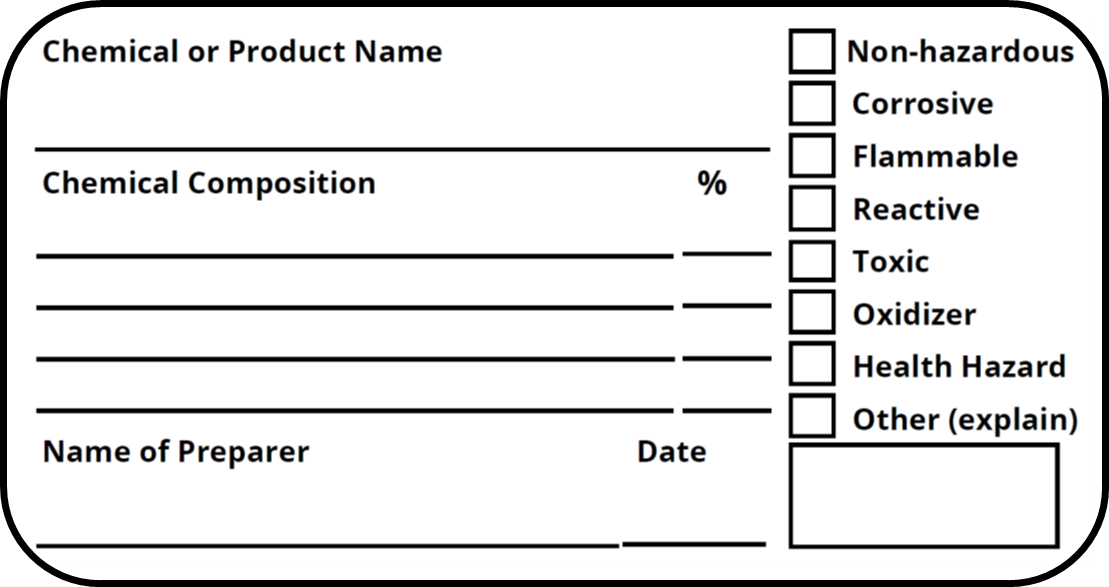
![New OSHA Hazard Communication Regs [What Employers Need to Know]](https://cdn2.hubspot.net/hub/38664/file-31592697-jpg/images/oshahazardcommunicationstandardpictograms2.jpg)

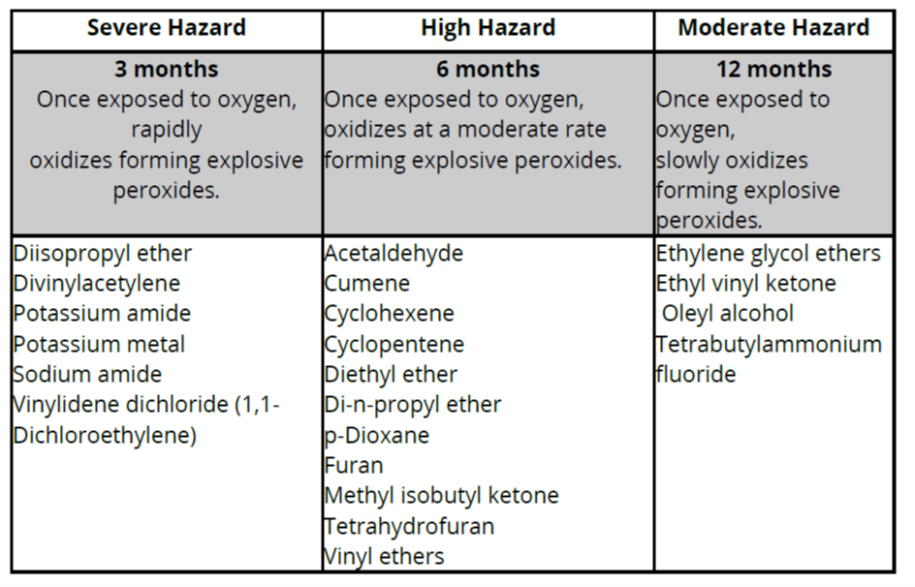

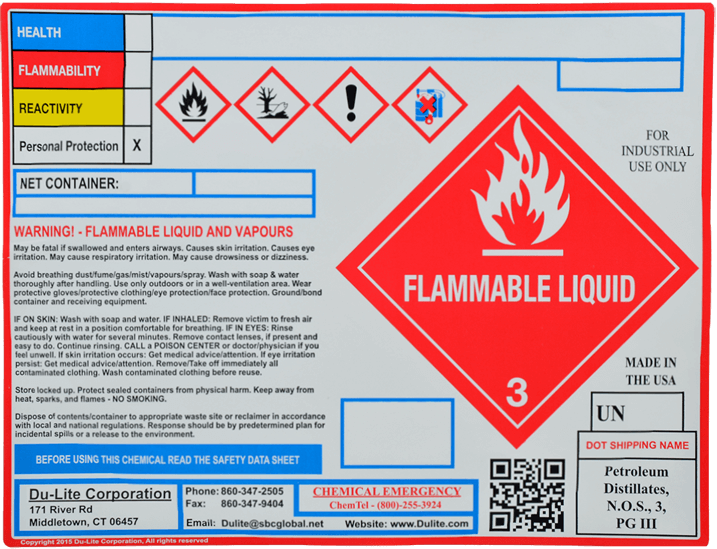
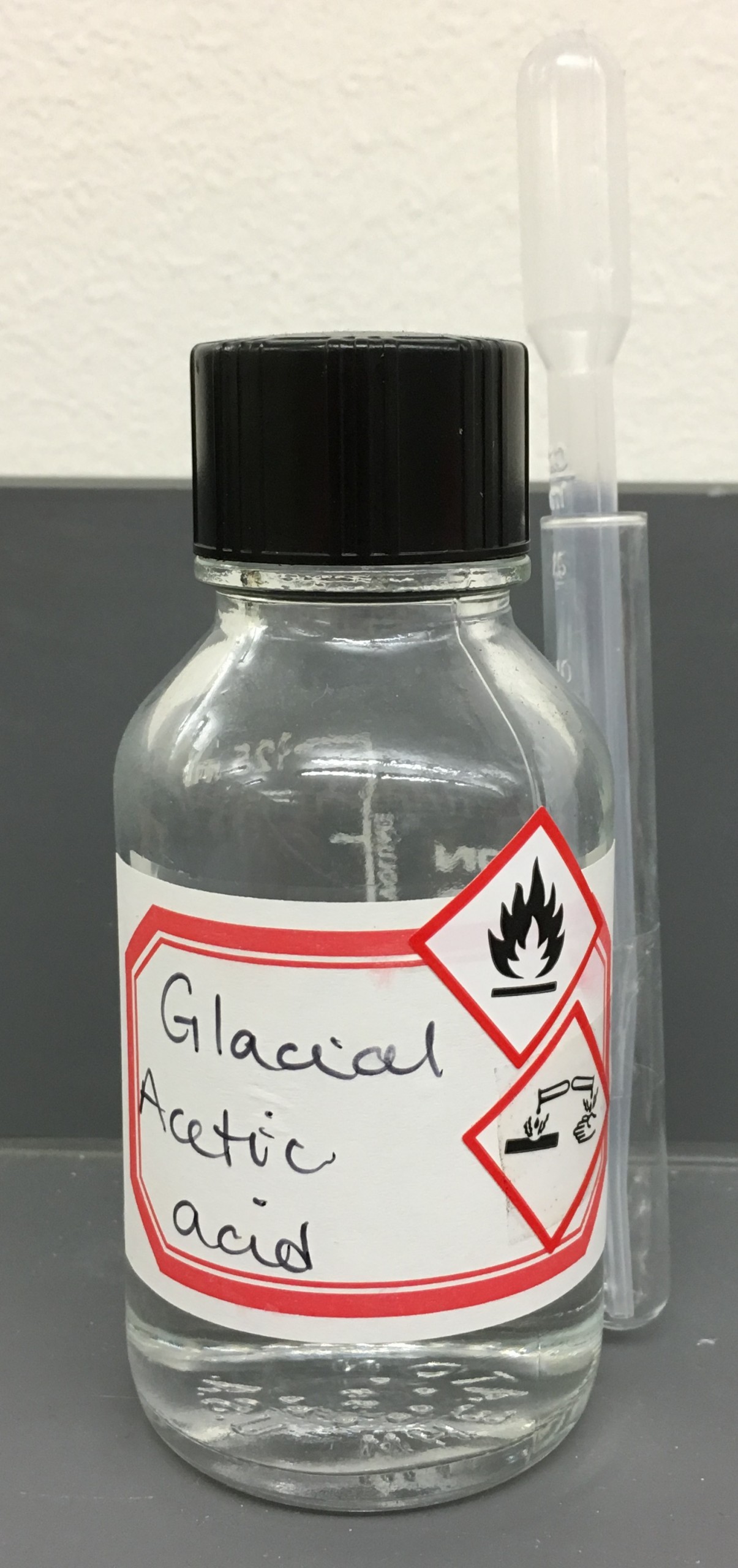
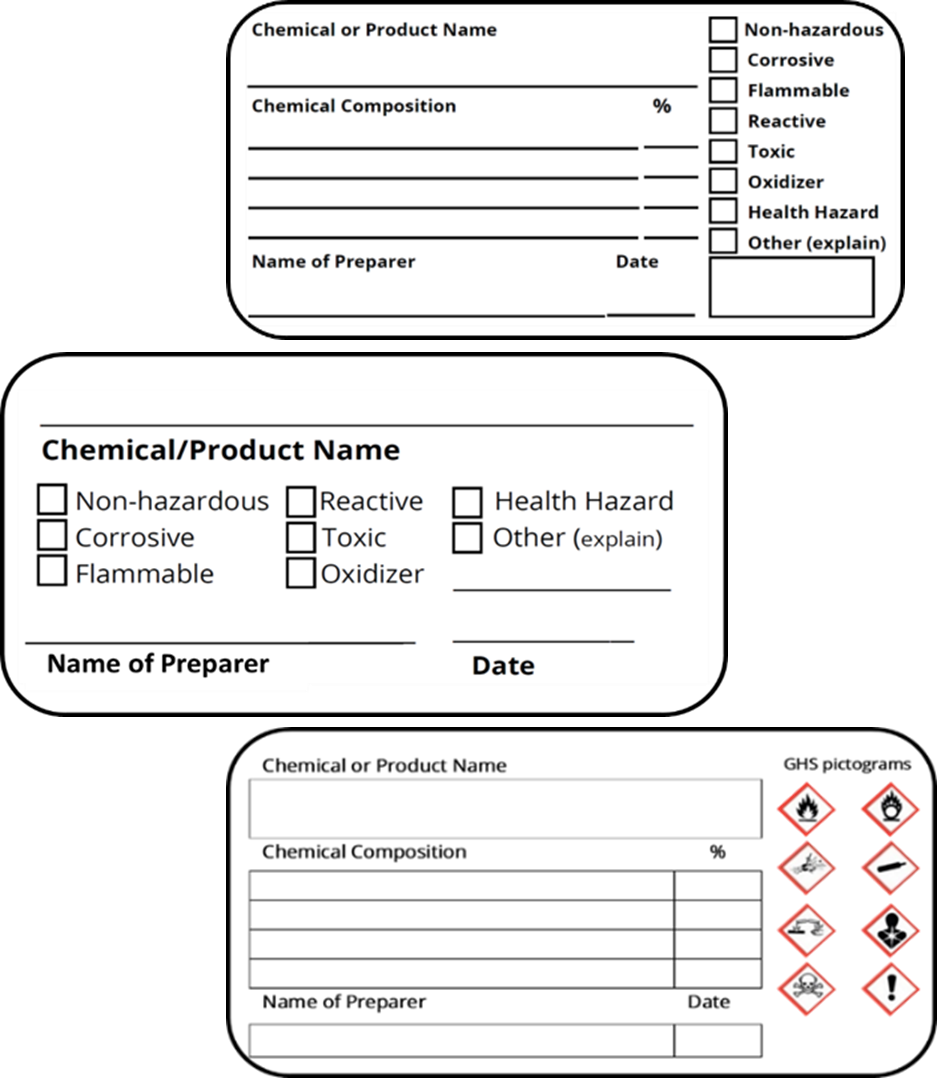
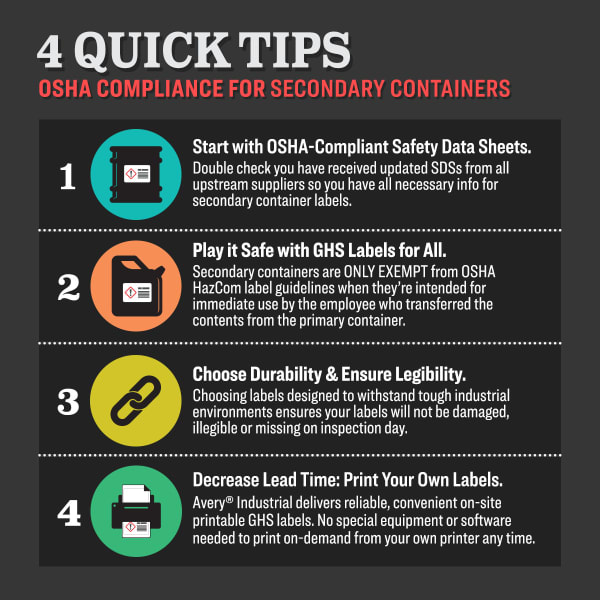

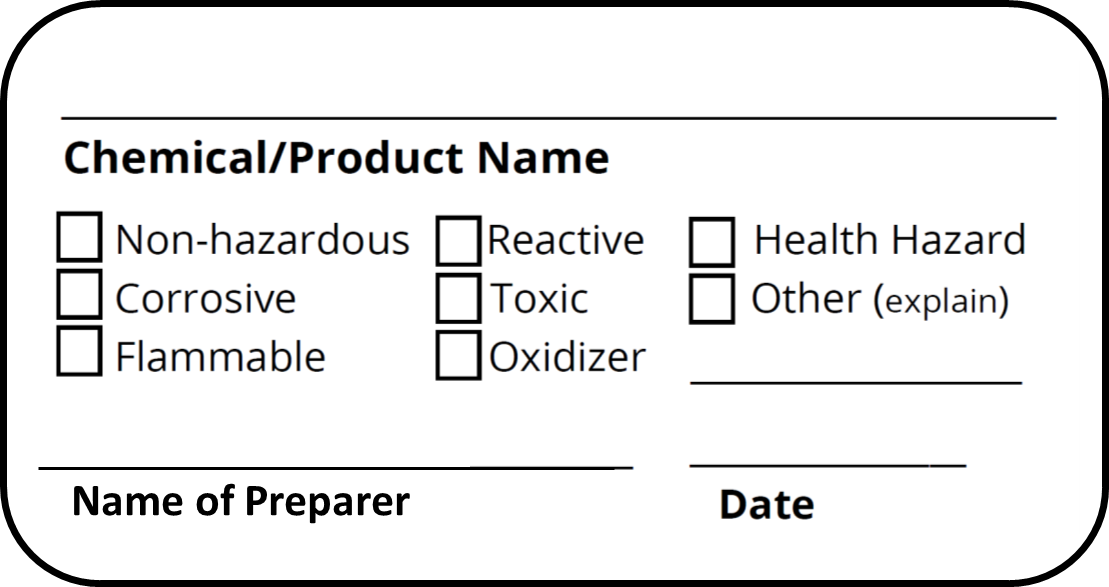
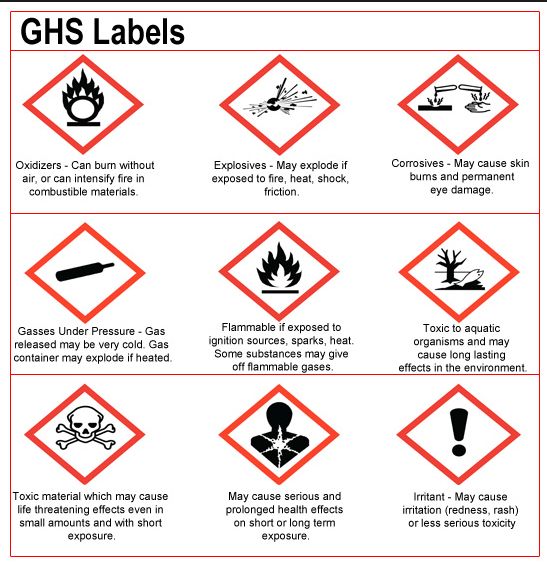



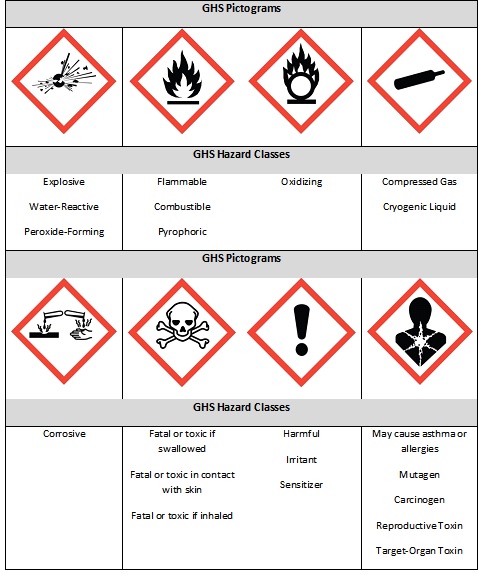
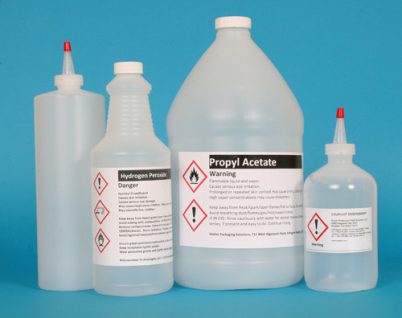

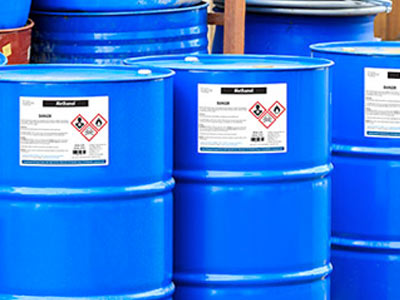

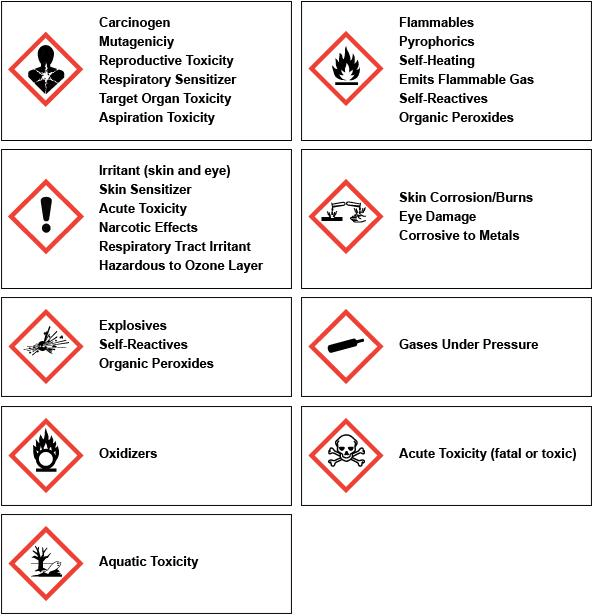
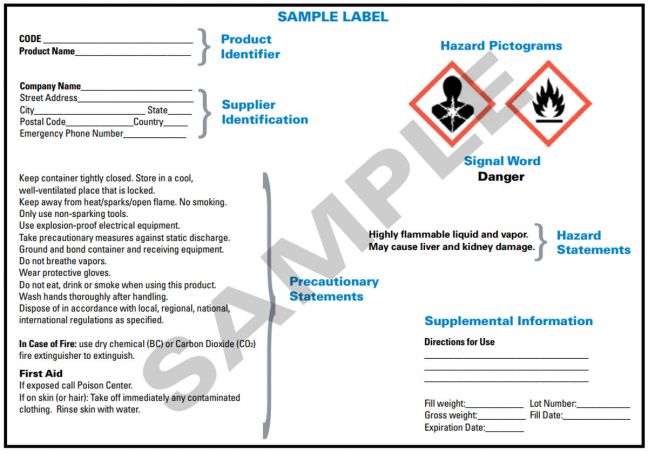
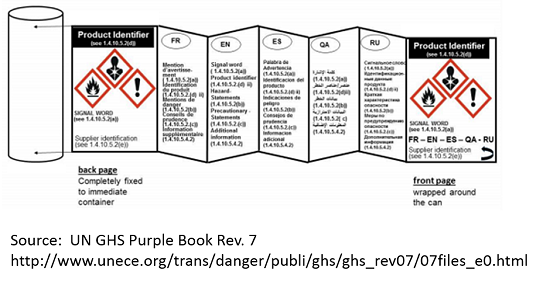
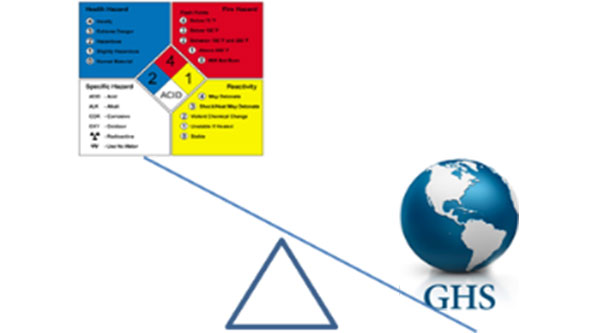
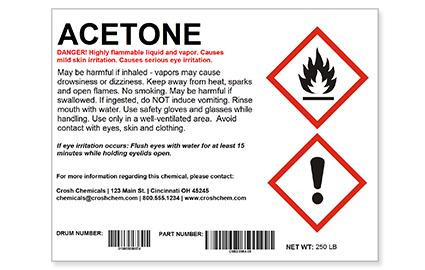
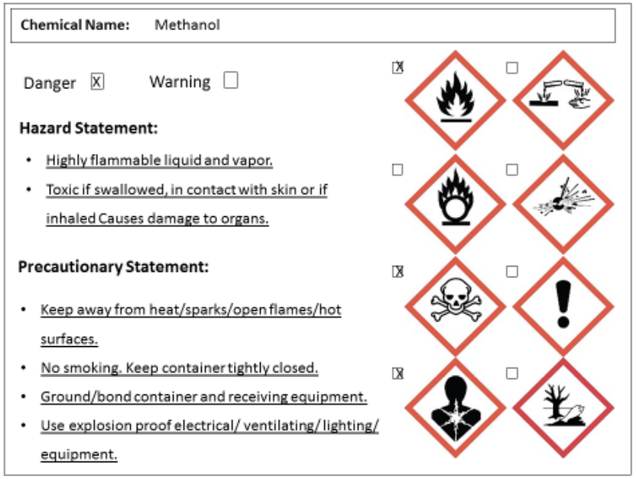
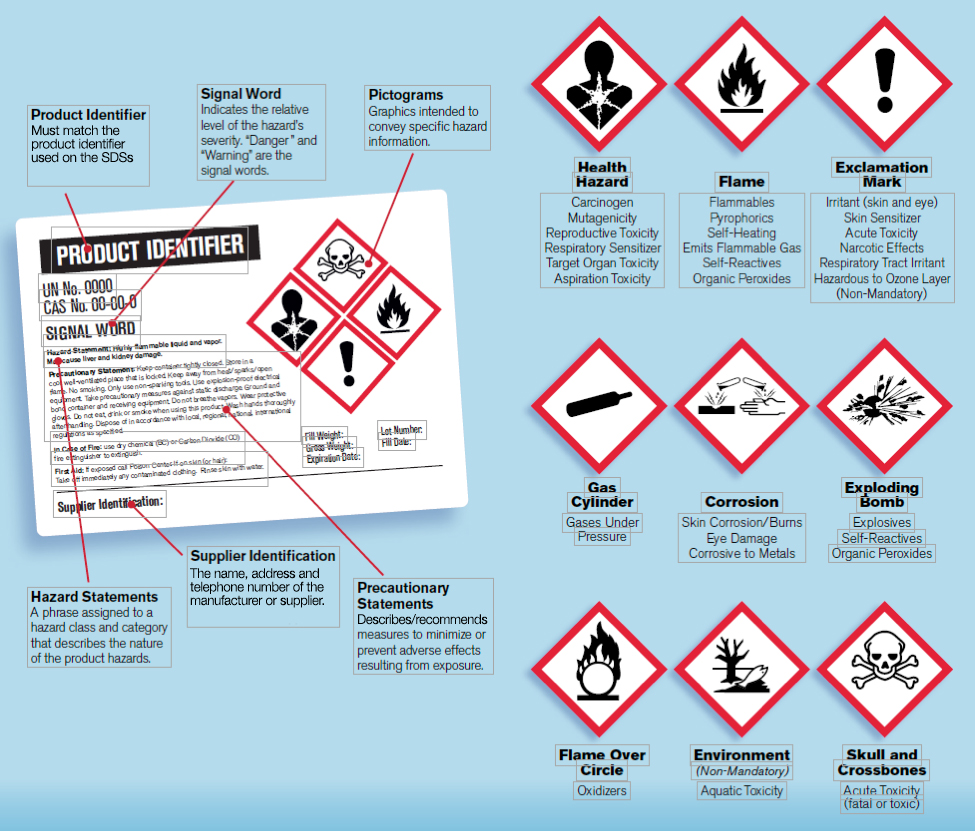


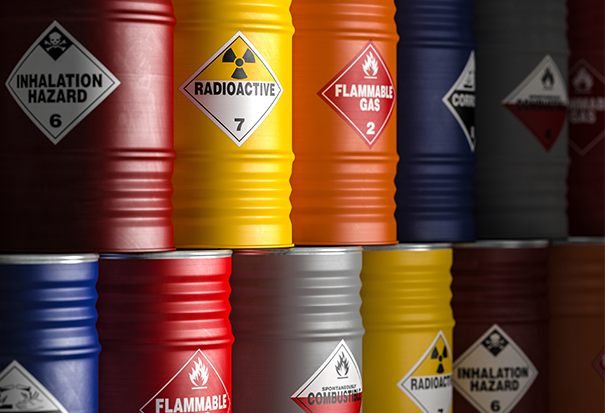


Post a Comment for "38 standard labels for chemical containers"